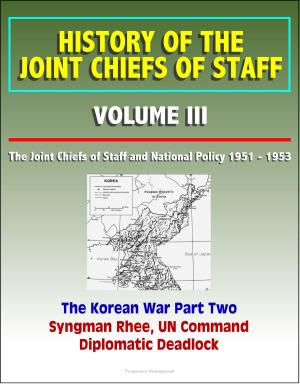1995 Oklahoma City Bombing: Terrorist Tragedy at the Murrah Federal Building - Timothy McVeigh and Terry Nichols, Foreign Connections, Right-Wing Domestic Terrorists, OKBOMB Task Force
Nonfiction, History, Modern, 20th Century, Social & Cultural Studies, Political Science| Author: | Progressive Management | ISBN: | 9781310222702 |
| Publisher: | Progressive Management | Publication: | January 12, 2016 |
| Imprint: | Smashwords Edition | Language: | English |
| Author: | Progressive Management |
| ISBN: | 9781310222702 |
| Publisher: | Progressive Management |
| Publication: | January 12, 2016 |
| Imprint: | Smashwords Edition |
| Language: | English |
Professionally converted for accurate flowing-text e-book format reproduction, this unique publication presents official reports about the Oklahoma City bombing.
Contents: Responding to Terrorism Victims: Oklahoma City and Beyond * Chairman's Report: Oversight and Investigations Subcommittee of the House International Relations Committee - The Oklahoma City Bombing: Was There A Foreign Connection? * 10 Years After the Oklahoma City Bombing, the Department of Homeland Security Must Do More To Fight Right-Wing Domestic Terrorists * An Investigation of the Belated Production of Documents in the Oklahoma City Bombing Case - U.S. Department of Justice
At 9:02 a.m. on the morning of April 19, 1995 a bomb exploded from within a Ryder truck under the Alfred P. Murrah Federal Building in Oklahoma City. The blast caused a partial collapse of all 9 floors of the 20-year-old building. 168 people died. Rescuers from the Oklahoma City Fire Department entered the building unsure of whether or not the building would continue to support its own weight. Most of the steel support system had been blown out. Within five hours of the blast the first FEMA urban search-and-rescue task force was deployed. By 6 p.m. the task force was in the building searching for victims. One of the first assignments was to search the second floor nursery for victims. Teams with search-and-rescue dogs began the search in the nursery. The dogs are trained to bark when they find live victims. No dogs barked that night. On the 10th anniversary of Oklahoma City bombing, President Bush said the bombing of a federal office building in Oklahoma City, Oklahoma, is an event “in our national memory where the worst and the best both came to pass.” Bush said the country remembers the malice committed that day and honors the “many acts of courage and kindness we saw in the midst of that horror.” Speaking at a ceremony in Oklahoma City on the 10th anniversary of the attack, Vice President Cheney said all Americans respect the families of the 168 victims and over 800 injured. Former President Bill Clinton, who held that office at the time of the bombing, also attended the ceremony. “All humanity can see that you experienced bottomless cruelty and responded with heroism,” Cheney said. “Your strength was challenged, and you held firm. Your faith was tested, and it has not wavered.” Cheney recalled his personal reaction to hearing about the bombing and later seeing that it was “far worse than anything I had imagined.” He said the bombing is “still deeply etched” in the memories of Americans and commemorating the tragedy is a way to recall the “ten thousand acts of kindness, and mercy, and bravery” committed that day. The vice president honored the contributions of ordinary Americans - volunteers who assembled to sift through the rubble for survivors, citizens who stood in lines for hours to give blood, and professionals who came from across the country to aid in relief. “To gather at this time of reflection is to feel once again the impact of April 19th, and to admire once again the resolve that came through almost immediately in Oklahoma City,” Cheney said. Timothy McVeigh was convicted on June 2, 1997, on 11 criminal counts related to the bombing: conspiracy to use a weapon of mass destruction, use of such a weapon, destruction of a federal property by explosives, and first-degree murder for the deaths of eight federal law enforcement agents working in the building. He was executed by lethal injection June 11, 2001.
Professionally converted for accurate flowing-text e-book format reproduction, this unique publication presents official reports about the Oklahoma City bombing.
Contents: Responding to Terrorism Victims: Oklahoma City and Beyond * Chairman's Report: Oversight and Investigations Subcommittee of the House International Relations Committee - The Oklahoma City Bombing: Was There A Foreign Connection? * 10 Years After the Oklahoma City Bombing, the Department of Homeland Security Must Do More To Fight Right-Wing Domestic Terrorists * An Investigation of the Belated Production of Documents in the Oklahoma City Bombing Case - U.S. Department of Justice
At 9:02 a.m. on the morning of April 19, 1995 a bomb exploded from within a Ryder truck under the Alfred P. Murrah Federal Building in Oklahoma City. The blast caused a partial collapse of all 9 floors of the 20-year-old building. 168 people died. Rescuers from the Oklahoma City Fire Department entered the building unsure of whether or not the building would continue to support its own weight. Most of the steel support system had been blown out. Within five hours of the blast the first FEMA urban search-and-rescue task force was deployed. By 6 p.m. the task force was in the building searching for victims. One of the first assignments was to search the second floor nursery for victims. Teams with search-and-rescue dogs began the search in the nursery. The dogs are trained to bark when they find live victims. No dogs barked that night. On the 10th anniversary of Oklahoma City bombing, President Bush said the bombing of a federal office building in Oklahoma City, Oklahoma, is an event “in our national memory where the worst and the best both came to pass.” Bush said the country remembers the malice committed that day and honors the “many acts of courage and kindness we saw in the midst of that horror.” Speaking at a ceremony in Oklahoma City on the 10th anniversary of the attack, Vice President Cheney said all Americans respect the families of the 168 victims and over 800 injured. Former President Bill Clinton, who held that office at the time of the bombing, also attended the ceremony. “All humanity can see that you experienced bottomless cruelty and responded with heroism,” Cheney said. “Your strength was challenged, and you held firm. Your faith was tested, and it has not wavered.” Cheney recalled his personal reaction to hearing about the bombing and later seeing that it was “far worse than anything I had imagined.” He said the bombing is “still deeply etched” in the memories of Americans and commemorating the tragedy is a way to recall the “ten thousand acts of kindness, and mercy, and bravery” committed that day. The vice president honored the contributions of ordinary Americans - volunteers who assembled to sift through the rubble for survivors, citizens who stood in lines for hours to give blood, and professionals who came from across the country to aid in relief. “To gather at this time of reflection is to feel once again the impact of April 19th, and to admire once again the resolve that came through almost immediately in Oklahoma City,” Cheney said. Timothy McVeigh was convicted on June 2, 1997, on 11 criminal counts related to the bombing: conspiracy to use a weapon of mass destruction, use of such a weapon, destruction of a federal property by explosives, and first-degree murder for the deaths of eight federal law enforcement agents working in the building. He was executed by lethal injection June 11, 2001.















